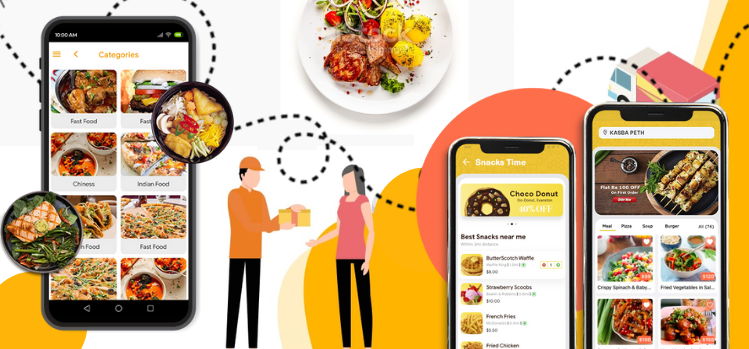The success of your mobile app is based on numerous factors. The most important one is the overall user experience. Delivering a positive and exceptional user experience makes the difference between a mobile app that succeeds and one that fails. A complete understanding of the user’s behavioral patterns and psychological underpinnings does not mean one can build a successful product that satisfies user experience and exceeds their expectations.

Creating user personas and user data is just the start of the complete UX journey. Mobile users demand more from apps to keep them coming back post the first download. To achieve optimal UX, the user experience needs to be enhanced through the mobile app. Here’s how you can achieve it through effective mobile application development:
1 Ensure Error-Free Functionality
Many app developers don’t expend effort for perfecting their app’s functionalities. This means the apps end up flawed. Statistics show that around 90 percent of users reported they stopped using an app on account of flaws in performance. Another 86% deleted or uninstalled at least a single mobile app on account of its flawed functionality. If the app does not work seamlessly and smoothly, the remaining elements of user experience are useless.
The functionality of the app can help users to complete tasks needed to accomplish their goal. This is the motivation for downloading the app, to start with. Prioritizing core features over the product roadmap enables users to complete tasks more effectively. Relevant mobile-only functionalities are critical for users so that they don’t revert to web applications.
2 Efficient Onboarding Processes
Mobile apps that offer the on-boarding processes determine the success or the failure of the product. If the user has an issue within the first screens, they can drop off with very little hesitation. Delivering the best onboarding experience is the foundation for retaining and attracting users. The goal of onboarding is showing the value of the app to users, by what can be demonstrated efficiently and quickly.
Many strategies optimize mobile user experience to encourage users to return, such as a tutorial to showcase how apps function. This is essential on-boarding, especially if the app has hidden functionalities or a complex workflow. The great degree of user onboarding also brings down abandonment rates and aids in helping positive long-term outcomes for app development
3 Usability Enables Users to Accomplish Goals within Apps
Usability enables the information, content, design and other elements laid out to function well. Goals can be accomplished within the app in this way. Helping users by telling them where icons can be tapped, swiped or selected is important. Check if the size of the links and buttons are easy to tap and well-spaced to avert selection errors.
4 Reduce Search Efforts and Drive Conversion Rates
Enabling users to find what is needed quickly to satisfy needs and drive conversion rates is important. Numerous search strategies can be integrated into the app such as keyword search and bar-code scanning. Offers users filters and search options to guide them directly also improves conversion rates.
5 Limiting User Input
This is the data required by users to enter in the fields concerned, such as the billing and credit data during registration and checkouts. User input needs to be minimal on mobile devices, as users may feel blocked by smaller screen sizes and drop-offs. Limit required information to prevent huge drop-off rates. Streamlining the process is essential by integrating spell check and other features that make it easier for users to enter their information.
6 Secure the Privacy of Users
A lot of users download an app and are left with a long list of permissions that must be agreed to, before allowing access to the app. Privacy-invading apps are common, with many containing malware. The research found that 82 percent of apps track mobile activities with 80 percent of these collecting local data. The privacy and security offered by an app correlate with the comfort and trust users feel while using a mobile app. This impacts brand loyalty. Transparent permission policies permit users to control how personal data is shared within the mobile app.
7 Rev Up Micro-Interactions
Each time one uses an app, a website or even an appliance, executing a micro-interaction is important. These are interactions that revolve around a single use case, such as changing settings, syncing devices, setting up an alarm, logging in or picking up a password and much more.
Micro-interactions can help humans feel more personal. They encourage the user to feel connected to the brand and improve the retention rate. Micro-interactions are minute and commonplace within the app experience and can be a powerful means of reaching or even exceeding expectations.
8 Add Control and Transparency
People have shared personal information on mobile devices and apps, but there is increased concern about how information is shared, used and stored. Apps use many sharing and privacy settings. There is clarity about how users tailor settings. For establishing trust and transparency, explain what is being shared and whom it is being shared with. Share settings should be shared through in-app messages. Private content needs to be preserved and not shared without knowledge or permissions. If one gets a negative review, it has additional impact on user experience.
9 Gather Qualitative Data
To work hard on the app’s design and analyze the effectiveness of the efforts is essential. Analyzing the metrics and understanding qualitative data to understand the UX and pinpoint chances for optimization is the key. Metrics, statistics, facts, and figures need to be collated so that user experience can be measured in tangible terms.
Conclusion
From protecting privacy to gathering data, adding control and transparency as well as ensuring effective on-boarding and error-free functioning, user experience needs to be improved for mobile apps to be user-friendly and intuitive.
Sankalp’s mobile app development team is exceptional when it comes to understanding your business requirements and translating it into mobile app development that offers the best UX. Visit Sankalp’s site for custom mobile app development or learn more on.







[…] After analyzing the trends in 2018, it is pretty sure that impressing end users only with functionality is quite sturdy. Your mobile app must be aesthetically appealing, and your user interface must be intuitive enough to create a long-lasting impact on them. The look should be able to spell-bound them. Designers have already started working to improve the user interface for ultimate user experience. […]
[…] get a competitive edge: Latest UI designs will give you an advantage over the competitors as your app will be […]